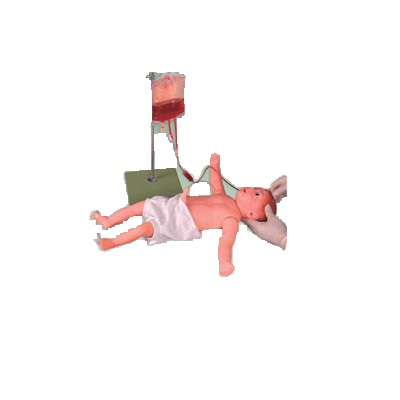Infantile venipuncture is a key technique in clinical nursing, often used for drug infusion, blood testing and other therapeutic measures. However, due to the relatively small and easily ruptured veins in infants, the operation is more difficult, and novice caregivers and clinicians often face a high failure rate and risk when performing. In recent years, infant venipunction training model came into being and has become an important tool for clinical training and skill improvement. So, can these training models significantly reduce puncture failure rates? We analyze from market trends, clinical significance, professional perspectives, combined with data.
1. Market trends: The rise of model training

Infantile venipuncture Training Model
With the development of medical education and nursing training, simulation training has become an important means to improve clinical skills. Especially in high-risk procedures such as infant venipunction, more and more hospitals and nursing schools have begun to introduce infant venipunction training models. These models not only help caregivers and physicians practice repeatedly in a risk-free environment, but also improve accuracy and confidence by simulating real-world clinical scenarios.
According to market research, the global medical simulation market is growing rapidly and is expected to reach approximately $6 billion by 2027. The infant venipunction training model, as part of this, is meeting the needs of the medical industry for high-quality training tools. Especially in the field of neonatal care, the number of hospitals adopting the training model is increasing year by year, and the application of the model is not only limited to the training of beginners, but also gradually used by experienced clinical personnel to maintain and improve their skills.
2. Clinical significance: reduce puncture failure rate and complications
The failure rate of venipentesis in infants is high in practice, especially in newborns and premature infants, because the veins are small and the blood vessel depth is different, the operation is more difficult. Puncture failure may lead to multiple operations, swelling at the puncture site, bleeding, and even complications such as infection, increasing the patient's pain and treatment risks.
The use of an infant venipuncture training model can significantly reduce these risks. Through simulation training, caregivers and physicians can:
- Improved puncture success: The simulation model provides a variety of vein structures and puncture sites, allowing operators to familiarize themselves with common blood vessel locations in infants and reduce blind manipulation.
- Reduce puncture site damage: The training model helps the nursing staff master the correct puncture Angle and force to reduce the risk of damage to the baby's blood vessels.
- Enhanced emergency response: By simulating emergency situations, training models can help caregivers improve their ability to make rapid judgments and responses and reduce clinical errors.
Data support: One study showed that in hospitals that trained with infant venipentesis training models, venipentesis success rates increased by 30%, while complication rates decreased by 15%. In addition, the self-confidence of the nursing staff has also been significantly improved, and the performance in the actual operation is more stable.
3. Professional perspective: How does it affect the skills and judgment of caregivers
The professionalism of the infant venipuncture training model is reflected in its high simulation and pertinence. Modern training models usually have the following characteristics:
- Highly simulated: Some high-end models are equipped with real skin, vein and blood vessel structures, which can simulate the various reactions of the baby's body and help the caregiver improve the accuracy of the operation.
- Adapt to different operating difficulties: The model offers a variety of difficulty Settings, from simple venipunction to more complex multiple puncture operations, to help caregivers of all levels gradually improve their skills.
- Feedback system: Some models are equipped with instant feedback function, when the operation is not correct, the system will remind and give improvement suggestions, and help the operator to adjust immediately.
Nursing professionals say that training with these models can better understand the techniques and details of venipuncturing, so that they can be more comfortable in practice, reduce errors, and improve the success rate of clinical treatment.
4. Conclusion: Improve the quality of care and ensure the safety of infants
The infant venipunction training model is an innovative clinical training tool that significantly improves the skill level of caregivers and physicians when performing the procedure. Through simulation training, nursing staff can practice repeatedly in a risk-free environment, master the correct puncture techniques, and reduce the puncture failure rate and related complications. Data and clinical feedback show that the training model not only improves the puncture success rate, but also improves the quality of care and ultimately the safety of the baby.
As technology advances, infant venipentesis training models will continue to play an increasingly important role in medical education and clinical training, promoting the improvement of medical service levels and bringing more security to newborn care.
